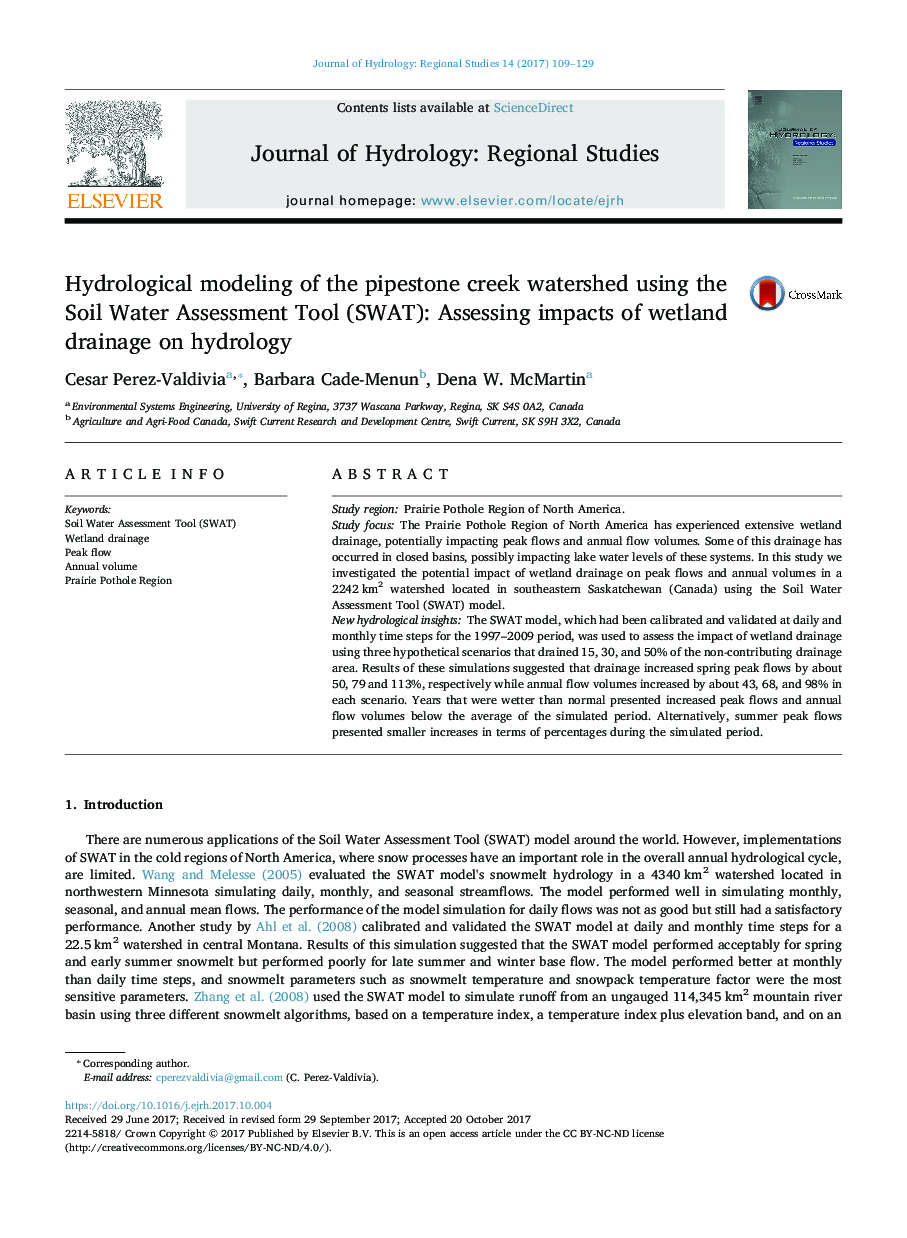| Article ID | Journal | Published Year | Pages | File Type |
|---|---|---|---|---|
| 8862907 | Journal of Hydrology: Regional Studies | 2017 | 21 Pages |
Abstract
The SWAT model, which had been calibrated and validated at daily and monthly time steps for the 1997-2009 period, was used to assess the impact of wetland drainage using three hypothetical scenarios that drained 15, 30, and 50% of the non-contributing drainage area. Results of these simulations suggested that drainage increased spring peak flows by about 50, 79 and 113%, respectively while annual flow volumes increased by about 43, 68, and 98% in each scenario. Years that were wetter than normal presented increased peak flows and annual flow volumes below the average of the simulated period. Alternatively, summer peak flows presented smaller increases in terms of percentages during the simulated period.
Related Topics
Physical Sciences and Engineering
Earth and Planetary Sciences
Earth-Surface Processes
Authors
Cesar Perez-Valdivia, Barbara Cade-Menun, Dena W. McMartin,
